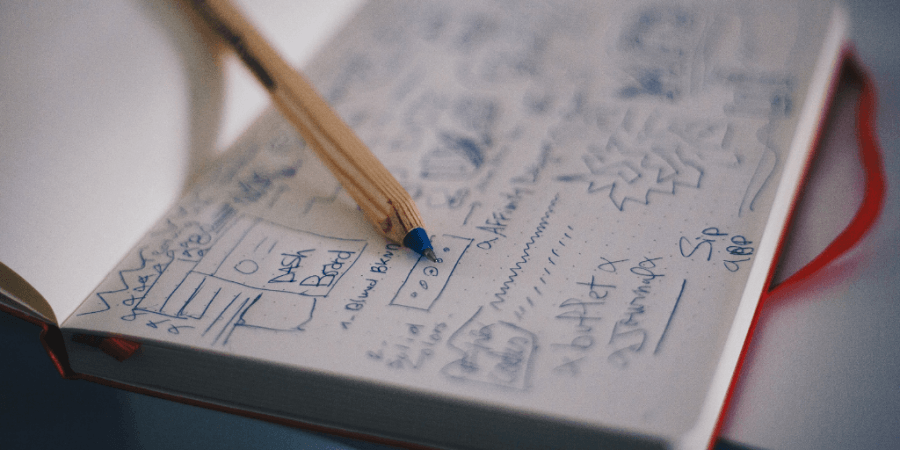5 Common Mistakes When Building A New Website
Editor note: This article has been updated to provide more in-depth information and accuracy as of 2018
5 Common Mistakes When Building A New Website
A website project is seldom the same. Sometimes you will encounter problems or issues that are specific to that project. These problems are related to technology. This could include the need for an extension which was previously overlooked by the client.
It could also mean having to re-visit the design multiple times to get it right.
When working on a website, there are multiple best practices that need to be followed. This then allows the web developer to complete the project to the best standard possible.
Mistakes, on the other hand, seem more trivial than their technological counterpart. Mistakes refer to elements of the project that should be considered by the client but aren't.
These can often cause more problems than any piece of technology. The reason being is that planning, trust, involvement and future consideration are all "people" elements. Without these confidently in place beforehand, problems can arise later in the project.
Our years of experience has seen us work with a multitude of different client personality types. This could also be split into understanding how 'dedicated' each client is.
Being dedicated to seeing the project to the end always yields the best results. Some, however, are actively involved in the beginning, only to falter and see their attention dwindle once the website hits the more crucial stages.
Our time in business has allowed us to pick up on 5 distinctive 'mistakes' that clients make. As a client, you need to be aware of each and understand the importance behind them.
Service providers will do everything within their power to honour the business agreement you make with them. For many, this is their livelihood and their passion.
Sometimes, poor experiences are met with negative reviews and calls for others to boycott the service. At the same time, these 'poor experiences' could be a result of the client and not necessarily the service provider.
1. Not Focusing on the Website's Purpose
Every website, regardless of platform, target audience, age or size will have a primary purpose. This purpose could be to sell products, educate readers, provide additional service information amongst many more. However, each website has 1 primary focus.
Any other intentions are secondary. When you visit a website you should be able to answer the question "what are they trying to make me do?"
Why do you ask this?
Because the answer should be clear. If the purpose of the website is to sell, then you will be met with product banners, prices and other imagery designed to influence you to buy.
Similarly, if the purpose is to provide more information, you may be met with "learn more" call to actions or more on page text. Each on page element works to further detail the purpose.
If your website is out of date the purpose may no longer be in-line with your current business plans. When this happens, it can become confusing for your visitors. This is why it is recommended to update your website every few years.
Without a purpose, you will find that you are in the possession of an asset that isn't really doing much for you. You may make a sale here and there but it is not optimised to perform at its best. Understanding Why Your Website Needs a Purpose is crucial to increasing your ROI.
2. Failing to Plan Efficiently
Planning is a core fundamental that should always be adhered to. Without planning, you are throwing your ideas in the air and hoping - somehow - these form into the perfect final masterpiece.
This is never the case.
Poor planning leads to a poor product. It's as simple as that. Your website project will likely last multiple months, failing to plan for each stage can see this deadline move further and further away.
You need to ensure that you plan for the website's content, navigation, functionality and design. Missing out key information can create problems further on in the project.
More often than not, a developer can plan their coding in advance if they know extra additions are to be made in the future. Without forwarding thinking, critical ideas can be missed. "Oh, I forgot about this" Is one phrase a developer dreads to hear.
This can often mean back peddling on what has been completed. Not only does this require additional time to complete, but the extra work will also mean re-evaluating the pricing.
Failing to miss out key ideas that could've been included - if planned correctly - will often incur additional costs. These costs could have been avoided if time was taken to plan for the required functionality.
Planning for the future is also important. If you know you will need a login area a month after the site is live, have the developers work that into the website whilst building it. It may cost you a little extra up front but will save time and further, larger costs in the future.

3. Not Placing Trust In the Designer
When you hire a web developer or any service provider, you are placing your trust in them to a) get the job done and b) uphold their end of the deal.
Occasionally, we see clients chasing the designers multiple times during the design stages. This immediately tells us that as a client, you do not trust the designer working on your project.
This can cause multiple problems during these stages. If you don't trust the designer, you might be more inclined to 'oversee' the earlier stages. Having involvement is necessary, as detailed in the point below, but too much involvement becomes controlling.
When you begin to control an aspect of the project, you are no longer allowing the service provider to show and use their skills. The skills that you paid for in the first place.
In many cases, this can reduce the overall quality of the final product. The designer is unable to show their creativity in the designs and is instead left with what you think you want, rather than what you might need.
Before hiring a designer, look through their portfolio. Understanding their past work will help gauge whether they are a good fit for your business and the project requirements.
Do not feel obliged to select a designer just because they do good work. If you are looking for an e-commerce website, you won't want to choose a web designer that has never worked with on. Sometimes what seems like a good fit, turns out to be troublesome.
Once you have selected the designer, you will want to speak to the service provider thoroughly. Understand their workflow, how the design process is handled and estimated time frame.
Once you have everything in place. Leave them to work through the project and provide input where necessary.
4. Not Being Part of the Process
There is nothing worse than saying to the web designer "I don't want anything to do with it - that is your job".
At Devmac, we try to go the extra mile to understand our clients and more importantly, their clients. Even with this understanding, being part of the process is necessary from a client standpoint.
Being actively involved in every stage of the project allows you to see the website at each stage. It also allows you to have input in at each stage.
Whilst this input is needed, it's important to understand that too much input can be negative. Similarly to trusting the designer, you need to trust those working on your website.
If you try and take control of the project, you are losing out on the necessary input and skill from the service provider.
Without your input, your web developer can run into issues further into the project. If they need to contact you for information and you aren't available for months, it will further delay the project.
If the developer doesn't have the information they need, they can either continue the work with what they have or wait for you to get back to them.
Choosing to continue the work without this added information will more often than not have little effect on the final outcome. Sometimes, however, it can mean that the project takes a different turn than what was originally agreed upon.
Web developers understand that continuing work without the client's input isn't the best option. If something is completed that the client then doesn't like, it will require back-peddling to get it fixed.

5. Web Design by Committee
The quality of your website will always be subjective. We all have different views on what makes a website great. If you show 10 people the same website, you will receive different levels of enthusiasm and excitement. Some may even dislike it.
As previously said, having involvement in the project is important. However, having multiple people involved in the project at the same time can become complicated. Having others oversee the project is necessary. This allows accurate project management and important information being handed over at the right time.
If you have multiple different people having the decision making power, the project will soon become convoluted. It is very difficult to find one set path to completion when you are being given different, conflicting information.
As a developer, the project needs a clear starting point and one clear end goal. When making decisions by a committee there is often backtracking on previously completed designs as someone now has a problem with it.
It is sometimes necessary to consult department managers to discuss website content. Similarly, consulting the head of sales on how the site could be used as a sales tool isn't a bad idea.
This should be done prior to the project starting. This then allows you to go into the original brief with every idea you need. The developer can then take all of this information and apply it to the first designs without compromising them further down the line.
You need to select decision makers before the project begins and try to keep this number as small as possible. Finally, you must ensure that these decision makers are present in all initial planning meetings.
If they try and make critical decisions when they have missed multiple meetings, the basis of their decisions may be completely wrong. This will send the project in circles and often derail it from the end goal.
Unsure what it is you need to plan for your new website? Talk to us on 01332 477575 and run us through your requirements.






